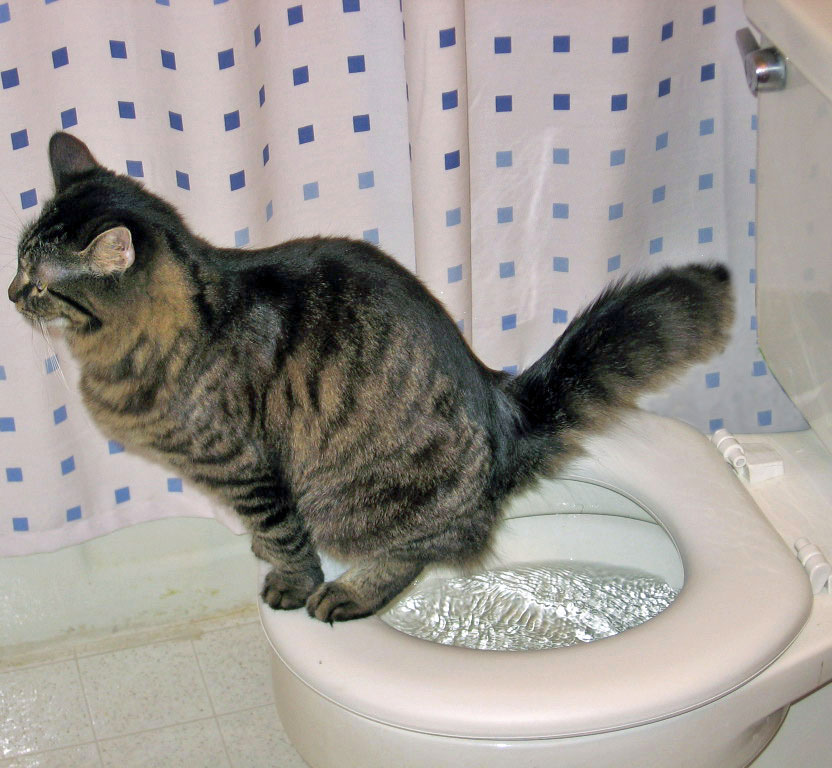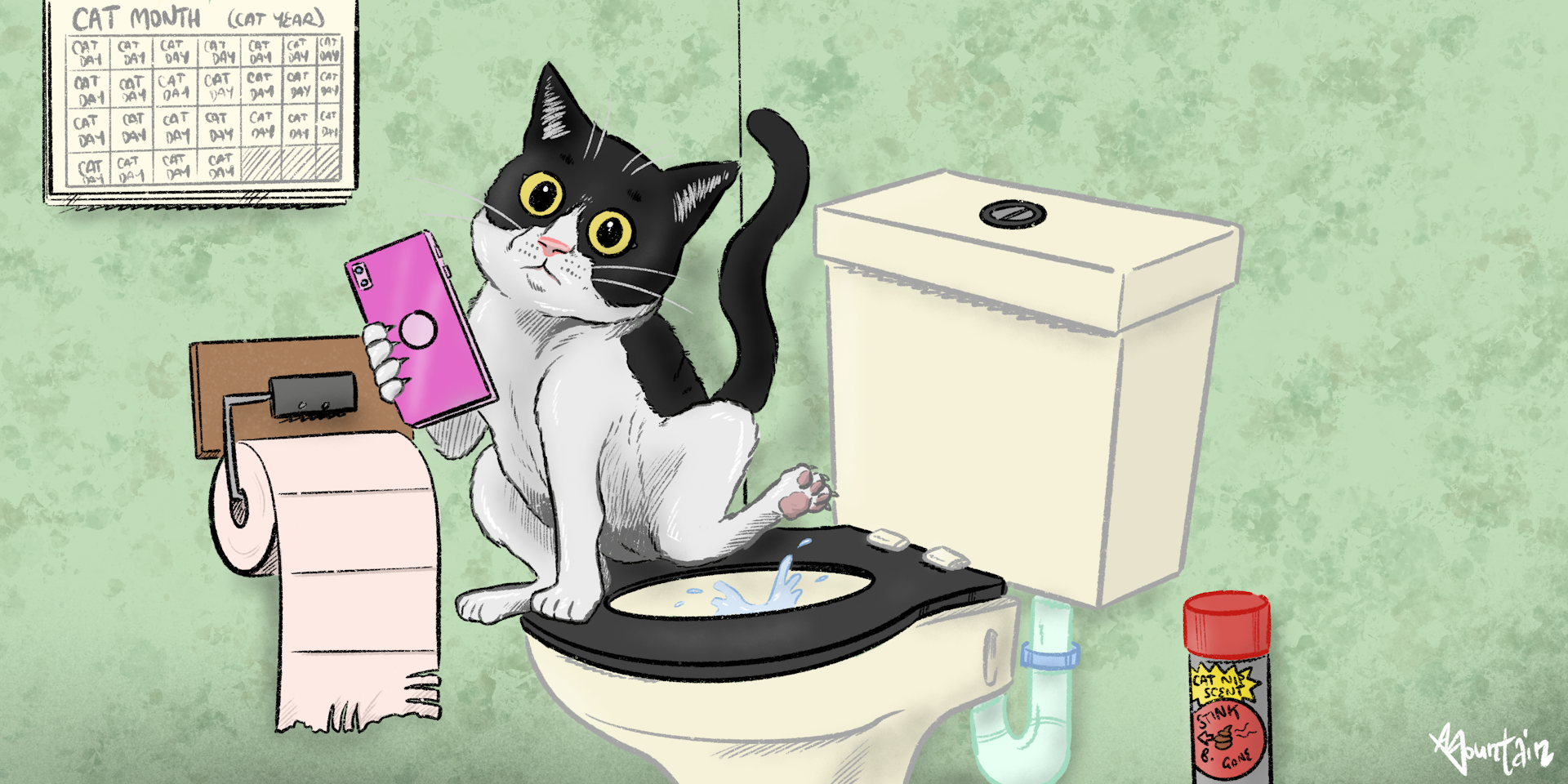Avoid Plumbing Problems: Don't Flush Cat Poop Down Your Toilet - Expert Advice
Avoid Plumbing Problems: Don't Flush Cat Poop Down Your Toilet - Expert Advice
Blog Article
The content down below in relation to Don’t flush cat feces down the toilet is really entertaining. Don't miss out on it.

Introduction
As feline owners, it's important to be mindful of exactly how we throw away our feline close friends' waste. While it might seem convenient to purge pet cat poop down the bathroom, this practice can have detrimental consequences for both the setting and human health and wellness.
Environmental Impact
Purging cat poop presents dangerous pathogens and bloodsuckers into the water system, positioning a substantial risk to marine communities. These impurities can adversely affect marine life and concession water high quality.
Health Risks
Along with environmental problems, purging cat waste can additionally pose health dangers to human beings. Pet cat feces may have Toxoplasma gondii, a parasite that can cause toxoplasmosis-- a potentially serious ailment, particularly for expecting ladies and people with damaged body immune systems.
Alternatives to Flushing
Fortunately, there are safer and more accountable ways to throw away feline poop. Think about the complying with alternatives:
1. Scoop and Dispose in Trash
One of the most usual approach of getting rid of feline poop is to scoop it into a naturally degradable bag and throw it in the trash. Be sure to utilize a committed clutter inside story and deal with the waste immediately.
2. Use Biodegradable Litter
Choose eco-friendly cat litter made from materials such as corn or wheat. These trashes are environmentally friendly and can be securely thrown away in the trash.
3. Bury in the Yard
If you have a yard, take into consideration burying pet cat waste in a designated location far from veggie gardens and water resources. Make sure to dig deep adequate to stop contamination of groundwater.
4. Set Up a Pet Waste Disposal System
Buy an animal waste disposal system especially designed for cat waste. These systems utilize enzymes to break down the waste, reducing smell and ecological influence.
Final thought
Liable family pet ownership extends beyond giving food and sanctuary-- it likewise involves correct waste administration. By avoiding purging feline poop down the bathroom and going with alternative disposal techniques, we can lessen our ecological footprint and shield human health and wellness.
Why Can’t I Flush Cat Poop?
It Spreads a Parasite
Cats are frequently infected with a parasite called toxoplasma gondii. The parasite causes an infection called toxoplasmosis. It is usually harmless to cats. The parasite only uses cat poop as a host for its eggs. Otherwise, the cat’s immune system usually keeps the infection at low enough levels to maintain its own health. But it does not stop the develop of eggs. These eggs are tiny and surprisingly tough. They may survive for a year before they begin to grow. But that’s the problem.
Our wastewater system is not designed to deal with toxoplasmosis eggs. Instead, most eggs will flush from your toilet into sewers and wastewater management plants. After the sewage is treated for many other harmful things in it, it is typically released into local rivers, lakes, or oceans. Here, the toxoplasmosis eggs can find new hosts, including starfish, crabs, otters, and many other wildlife. For many, this is a significant risk to their health. Toxoplasmosis can also end up infecting water sources that are important for agriculture, which means our deer, pigs, and sheep can get infected too.
Is There Risk to Humans?
There can be a risk to human life from flushing cat poop down the toilet. If you do so, the parasites from your cat’s poop can end up in shellfish, game animals, or livestock. If this meat is then served raw or undercooked, the people who eat it can get sick.
In fact, according to the CDC, 40 million people in the United States are infected with toxoplasma gondii. They get it from exposure to infected seafood, or from some kind of cat poop contamination, like drinking from a stream that is contaminated or touching anything that has come into contact with cat poop. That includes just cleaning a cat litter box.
Most people who get infected with these parasites will not develop any symptoms. However, for pregnant women or for those with compromised immune systems, the parasite can cause severe health problems.
How to Handle Cat Poop
The best way to handle cat poop is actually to clean the box more often. The eggs that the parasite sheds will not become active until one to five days after the cat poops. That means that if you clean daily, you’re much less likely to come into direct contact with infectious eggs.
That said, always dispose of cat poop in the garbage and not down the toilet. Wash your hands before and after you clean the litter box, and bring the bag of poop right outside to your garbage bins.
https://trenchlesssolutionsusa.com/why-cant-i-flush-cat-poop/

Hopefully you liked our article on How to Dispose of Cat Poop and Litter Without Plastic Bags. Thanks a lot for taking a few minutes to read our blog post. Sharing is good. You just don't know, you may just be helping someone out. Bless you for your time. Kindly pay a visit to our blog back soon.
Click Here Report this page